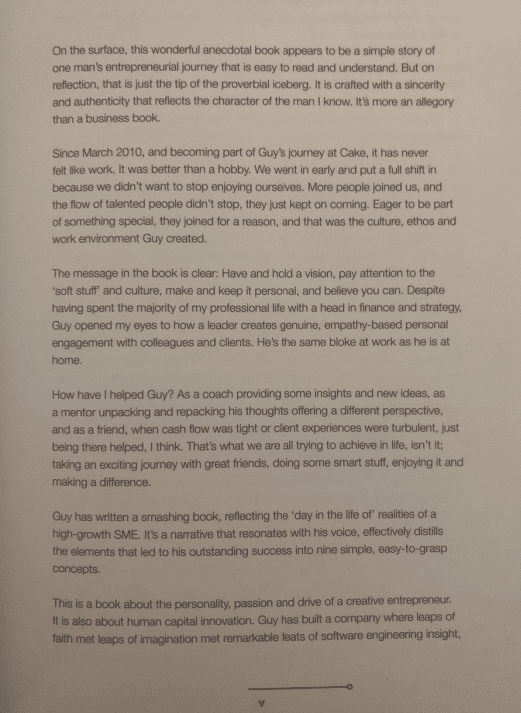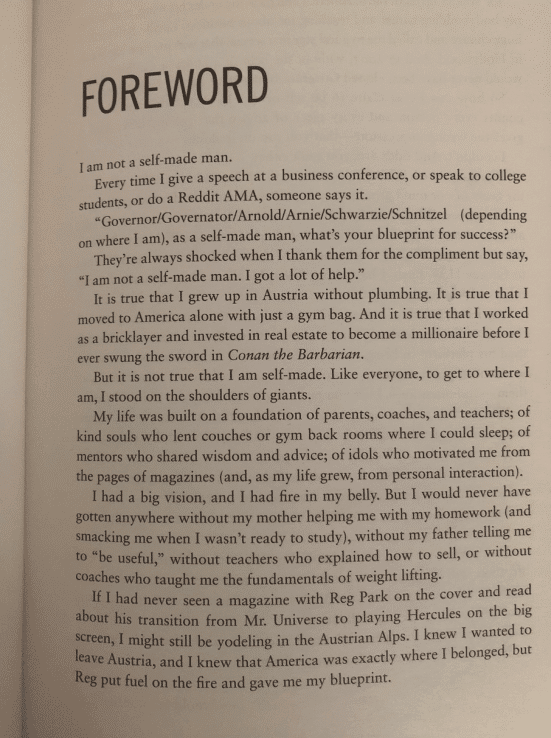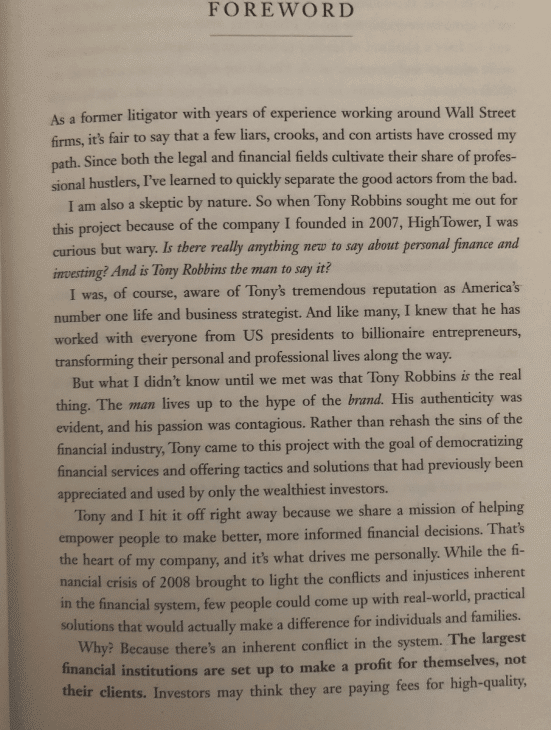Overview
Ever wonder how on earth you can increase your book sales? What if I told you that out of all the possible book sales and book marketing strategies that exist in today’s world, you only have to do one of them to sell books for the rest of your life. You’d say I’d gone mad, right?
What if I then told you that not only is it as simple as doing just one thing, but also that it will cost you absolutely nothing. Would I have your attention?
How about, you only need to do one thing, one time, it’s totally free of charge, and it will continue to work for you with no extra effort on your part once it’s in place. Ok now, this is just getting ridiculous.
Yet it’s true. This article shows you what it is AND how you can do it.
What Is It?

A Foreword. A book’s Foreword is a highly intelligent piece of marketing that goes at the very beginning of your business book. The purpose of a book’s Foreword is to reinforce the message within the book and give it maximum credibility via a personal message to the reader, therefore boosting sales. It is written by someone who:
– Isn’t the author
– Has a high, if not a celebrity, profile in the field the book contributes to, and
– Is someone whom the reader likely knows of, respects and admires.
That bit is key. The Foreword is the part of the book the readers read first. You cannot beat the power of celebrity endorsement and guess what the timeless, most powerful book sales strategy is? You guessed it; word of mouth.

A Foreword is marketing for the book you simply cannot afford to miss out on. It’s mutually beneficial and free! It’s expert positioning for the person who writes it and expert positioning for the author. It’s the book equivalent of an amazing video testimonial for your site from a top client or being introduced onto a world stage by a respected speaker. In other words, it is a testimonial not just for the book but importantly, for the author.
Placed within the book itself, it goes before the Preface, Introduction and other content. Because of its positioning, the Foreword has the power to set the readers’ expectations for the entire book. It can also be advertised by a banner on the front cover i.e. “Foreword by XXXX”, enhancing the book’s credibility before they opened it or bought it. Arguably, that could tip the sale over the edge.
Why Does It Work?
This is best thought of from your reader’s point of view. You may or may not be someone they’ve heard of. If this is your first book, or if building your community is a work in progress, you don’t really have a platform from which to launch it. Please don’t panic if I’ve just described you! That’s why there are a gazillion other book marketing and sales strategies out there you can employ. One would be to add this blog to your favourites and check in each week to see the latest, brand new content on all things book marketing.
Social Proof

The bottom line is unless you have the endorsement of someone your reader does know, you’re asking them to take your word for it that they should buy from you. We all know that’s something prospective customers these days just don’t do. They want reviews, testimonials, constant new content…proof of your authority, in other words. And that is exactly what a Foreword provides. However, the benefits don’t stop there.
Authority
The words “authority” and “author” actually stem from the same Latin word, “auctoritatis”, meaning “influence, authority, prestige, advice, opinion, influence, command”, from auctor, meaning “master, leader, author”. And of course, the whole point of authoring your own business book is to become the leading influence in your space. You are looking to take intellectual ownership of your niche.
It will always be more compelling to your wider audience, who don’t know you yet, to hear someone who is already in a position of international, if not global, influence endorse you. And for the people who do know you, they will be proud and pleased to know they are a part of a movement that continues to grow. A Foreword contributor will boost your status in the eyes of your audience.
Expanded Audience
Typically when someone has put their name to something, as a Foreword contributor does with a book, it is because they believe in the message and the impact it will have. Why else would they do it? It’s not normal to pay someone for a Foreword (although you might consider it if they request it and they’re THAT good).
Even if they did command a fee, it’s their reputation at stake. They’d hardly endorse something they don’t believe in. They’re also getting influence out of doing it, right? It’s an opportunity to reach more people and perhaps boost sales of their own book(s) whilst doing very little work.
It’s also a strong thought leadership piece for them. They are going to want to share it as well. It’s free marketing for them. They have their name on a great book they haven’t had to do any work on.

How many people might an established thought leader have access to via their social media following, email list(s) and networks? 10,000? 50,000? 100,000+? Those are all great numbers. Imagine reaching 10,000 additional readers without having to pay even £0.01p in advertising to get to them.
How would these three things impact your overall marketing and sales results? The results would be game-changing. This is how powerful a Foreword is. Let’s take a look at the mechanics.
How Does It Work?
Tone Of Voice
Your book’s Foreword should address the reader directly as if this is a personal note to them. The tone is usually engaging and ‘on the reader’s side’. It links where they are now to where they are trying to get to, outlining why, with your expertise and knowledge, this book is the tool to help them.
Structure
The best Forewords follow a strong structure, just like all other parts of your business book. The following are key points that your Foreword should include, although they are in no particular order.
Overview
This is as simple as 3-5 lines of text that sum up:
- The essence of the book
- The overall message
- The book’s purpose, and
- Why it’s important, in the Foreword writer’s opinion.
It’s almost like a mini introduction. Very mini! Overall, you want to keep your Foreword to 2 pages or less in the book. Remember, it’s placed at the very beginning, before the book’s Introduction. It if waffles, you risk the book becoming more about the Foreword contributor than your knowledge or the reader. When this happens, you could easily lose readers before the main content has even begun.
Relationship
Your Foreword then needs up to two paragraphs on how and when the contributor and you, book’s author, first met. They should include a few lines on your ‘journey’ together from then until now.
The aim of doing this is to back you, the author, up personally. The contributor should speak up to your strengths and good traits. The relationship should be told like a story, and if possible, include humorous elements which are more personable.
What if you haven’t met your Foreword contributor yet? Maybe they’re a celebrity and you’ve written to them regarding contributing to your book. What if you have a more formal relationship and asking for funny stories isn’t particularly relevant?
In this case, the contributor can take the opportunity to instead explain:
- Their work in the book’s field
- How well they know it
- How it’s evolved over the time they’ve been in it, and
- How important they find a book like this as a contribution.
So they’d be speaking to your intellect in the absence of personal memories and history.
Expertise
The Foreword contributor should be able to easily convey intellectual prowess, confidence and thought leadership. A Foreword should never be written by someone who lacks those traits. Therefore, it should be simple for them to include:
- Their work in the book’s field
- How the expert has found, and continues to find, the information in your book to be true and relevant, and
- What is happening in the world now to make your book so pertinent?
This section should incorporate information on the expert’s career and accomplishments. Length-wise, it can take up either 2-3 short paragraphs or they can wind it around the rest of the content to highlight their expertise as they go.
Specifics
The points above all set the scene for the book. So far, your Foreword has provided a vision in the reader’s mind of the ‘why’ and the ‘why that’s important’ behind the book. Now, it’s time to throw some light on the ‘what’. What specifically does this book deliver, in the opinion of the Foreword contributor?
They should include some description of:
- The key points the book makes
- Why they are important for the reader
- How, when implemented, they will benefit the reader, and
- What the expert hopes the reader will do with this information after reading.
Again this information does not need to take up more than a paragraph. These questions will be answered by you in more detail and in your own words in the book’s Introduction.
The aim here is to provide the reader with instruction and impetus to read on, coming from someone they see as an established leader and role model. Your Foreword contributor carries a lot of authority for your reader; they are likely to listen to them. An instruction from them may have more clout in the early pages than one from you.
Sign off
Your Foreword contributor should end on a positive and/or humorous note. Perhaps a quote, or a short story. They will be leaving the reader on a high and in a good state to start the book. Following that, they should sign off with their printed name, and an image of their signature. This is a far more personal way to end the Foreword, and is symbolic of the contributor handing over the content reigns to you, the author, to continue.
Optional
- A professional photo of them might make more of an impact on the reader
- The Foreword can be tidied up by your editor so that it reads correctly, or it can be left in the expert’s own voice/or more informal tone with only obvious spelling and grammar corrections made. It depends on who it is and their personal brand, as well as the book’s topic, as to how they might wish to be represented.
Foreword Examples
1. Personal
From ‘Creating & Maintaining Cultural Excellence in Technical Teams’ by Guy Remond:

Full text:
On the surface, this wonderful anecdotal book appears to be a simple story of one man’s entrepreneurial journey that is easy to read and understand. But on reflection, that is just the tip of the proverbial iceberg. It is crafted with a sincerity and authenticity that reflects the character of the man I know. It’s more an allegory than a business book.
Since March 2010, and becoming part of Guy’s journey at Cake, it has never felt like work. It was better than a hobby. We went in early and put a full shift in because we didn’t want to stop enjoying ourselves. More people joined us, and the ow of talented people didn’t stop, they just kept on coming. Eager to be part of something special, they joined for a reason, and that was the culture, ethos and work environment Guy created.
The message in the book is clear: Have and hold a vision, pay attention to the ‘soft stuff’ and culture, make and keep it personal, and believe you can. Despite having spent the majority of my professional life with a head in nance and strategy, Guy opened my eyes to how a leader creates genuine, empathy-based personal engagement with colleagues and clients. He’s the same bloke at work as he is at home.
How have I helped Guy? As a coach providing some insights and new ideas, as a mentor unpacking and repacking his thoughts offering a different perspective, and as a friend, when cash flow was tight or client experiences were turbulent, just being there helped, I think. That’s what we are all trying to achieve in life, isn’t it; taking an exciting journey with great friends, doing some smart stuff, enjoying it and making a difference.
Guy has written a smashing book, reflecting the ‘day in the life of’ realities of a high-growth SME. It’s a narrative that resonates with his voice, effectively distills the elements that led to his outstanding success into nine simple, easy-to-grasp concepts.
This is a book about the personality, passion and drive of a creative entrepreneur. It is also about human capital innovation. Guy has built a company where leaps of faith met leaps of imagination met remarkable feats of software engineering insight, intelligence and craftsmanship. The art of possible made possible by a leader committed to his people’s well being.
At a personal level, we share a love of dogs, a passion for our family, and an even greater, overwhelming passion for our respective football teams. No wonder we got on like a house on fire.
Consider reading this and then sharing it with others. After all, things usually turn out better when everyone is on the same page. That’s Guy’s ethos: cultural excellence and alignment creates success for everyone.
Ian Brookes
2. Simple + high profile = effective
From ‘Tools Of Titans’ by Tim Ferris:

Using the Look Inside function on the Amazon sales page for ‘Tools Of Titans’ by Tim Ferris, you can read the Foreword in full. Written by Arnie, on the face of it he talks mostly about himself and his own career. When you look, though, he’s pointing to the book, the author and the message throughout, taking up just 2 pages.
3. Professional
From ‘Money: Master The Game’ by Tony Robbins:

Check out the Foreword to Tony Robbins’ famous bestseller. You can also view this in full using Amazon’s Look Inside function. Elliot Weissbluth takes a more formal approach to this one by addressing the reader directly, opening with his own experience related to the topic of Tony’s book, going on to endorse Tony for sharing his message.
The language used and the structure makes this Foreword sound almost like a school report; its serious tone lets the reader know there’s some important information inside. Length-wise, it’s two and a half pages.
Getting Started: Our Top 10 Tips
Have you considered including a Foreword in your book? If you’re already published, a Foreword would be a powerful way to boost sales of the second edition. Here are our top 10 tips:
1. Try making a shortlist of industry influencers to contact and see who’ll be happy to contribute
2. When you write to them, remember that while they’ll be flattered to be asked, they’re also really busy. They may even have other, similar requests. Don’t be disheartened if you don’t receive a reply
3. Try to keep your communication clean and simple
4. Think of ways you can stand out to them
5. You could include the link to a video in your initial email that is personal to them, explaining who you are, what you do and why you’ve authored your book
6. Attach a draft of your book, and let them know that you understand they’re stretched – knowing they’ve read two chapters is better than them not reading the whole book
7. You’re looking to impress this person, so make sure the draft you send them has been fully proofread. No-one wants to put their name to something that looks unprofessional
8. Make sure you’re clear on what you’re asking them to do
9. Be politely persistent. Don’t get the reply you’re looking for from the first person you contact? Don’t take it personally! Make a note to follow up in a week or so and contact the next person on your shortlist
10. Share these guidelines with them when they say yes, to help.
Next Steps
To understand the process for becoming a successful author, contact us on 020 3752 7057 or via our secure contact page and speak with a member of the team.

To read more about producing and marketing a successful business book, pick up your copy of The Entrepreneur’s Guide To Book Marketing Success here.
[/fusion_text][/fusion_builder_column][/fusion_builder_row][/fusion_builder_container]
